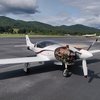Jack Cabano
Pre-takeoff checklist
- Joined
- Oct 5, 2021
- Messages
- 103
- Display Name
Display name:
1969 Cessna150J
Then there are the aluminum classics, C-120, Luscombe, Ercoupe.
Great light airplanes, but the Cessna, Luscombe 8E, and the Ercoupe 145-D are each over the arbitrary 1320 pound GW limit for LSA.
So are some of the later Champs such as the 7EC.



